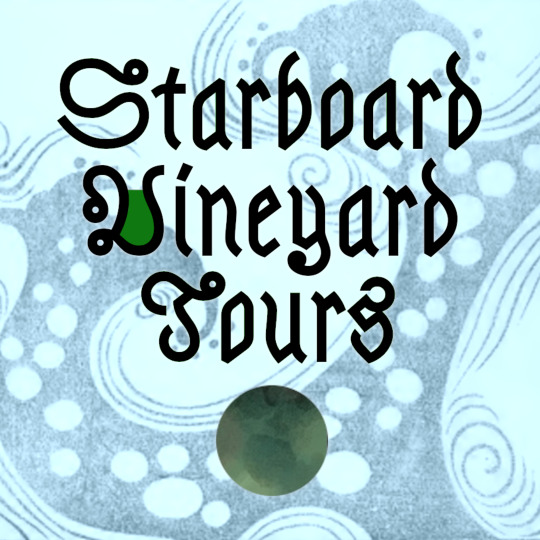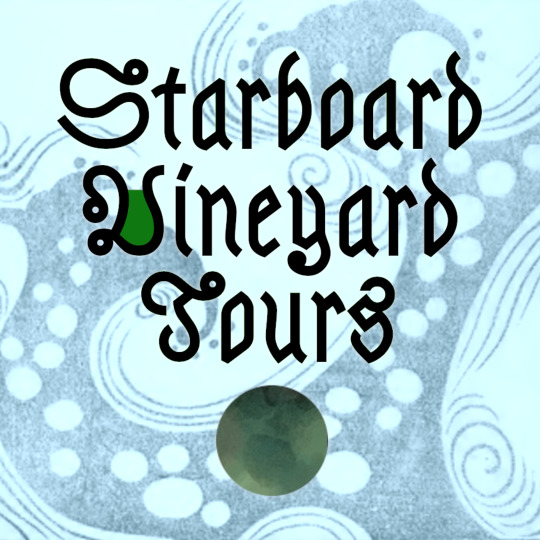#starboard vineyard tours
Text
Starboard Vineyard Tours 9: Do Metaphors Dream of Literal Sleep?: A Science-Fictional Theory of Representation, Chu

Starboard Vineyard Tours! It's out! We talked about Seo-Young Chu's Do Metaphors Dream of Literal Sleep?: A Science-Fictional Theory of Representation, undoubtedly the most evocative title of a book we've covered. Discover the power of lyric mimesis here!
#podcasts#podcast#science fiction#science fiction studies#abnormal mapping network#starboard vineyard tours
3 notes
·
View notes
Text
#gallery-0-13 { margin: auto; } #gallery-0-13 .gallery-item { float: left; margin-top: 10px; text-align: center; width: 33%; } #gallery-0-13 img { border: 2px solid #cfcfcf; } #gallery-0-13 .gallery-caption { margin-left: 0; } /* see gallery_shortcode() in wp-includes/media.php */
Open-mouth feeding, filtering sand eels (Photo by A. H. Kopelman for CRESLI July 18, 2018)
Humpback with seagulls (Photo by A. H. Kopelman for CRESLI July 15, 2018)
Humpback (Photo by A. H. Kopelman for CRESLI July 15, 2018)
Humpback (Photo by A. H. Kopelman for CRESLI July 11, 2018)
Short-beaked common dolphins (Photo by A. H. Kopelman for CRESLI July 8, 2018)
Great shearwater (Puffinus gravis) (Photo by A. H. Kopelman for CRESLI Aug. 1, 2018)
Bottlenose dolphins (Photo by A. H. Kopelman for CRESLI Aug. 1, 2018)
Humpback whale (Photo by A. H. Kopelman for CRESLI Aug. 8, 2018)
Fin whale mom (Photo by A. H. Kopelman for CRESLI Aug. 15, 2018)
Juvenile humpback (Photo by A. H. Kopelman for CRESLI Aug. 22, 2018)
Minke whale fins (Photo by A. H. Kopelman for CRESLI Aug. 26, 2018)
Scopoli’s Shearwater (Photo by A. H. Kopelman for CRESLI Aug. 26, 2018)
Humpback whale tail fin (Photo by A. H. Kopelman for CRESLI Aug. 26, 2018)
Your home turf may not be the first place that comes to mind, however, Long Island is among the best places to go whale watching in the world. The waters beyond the tip of this fish-shaped landmass we call home are home to several species of whales, including humpbacks, fin whales, minke whales and North Atlantic right whales, not to mention dolphins, porpoises, seals, sea turtles, sea birds and even flying fish. Departing from Montauk, Viking Fleet’s five-hour tour is the perfect way to see these creatures when they come to the surface to say hello.
The Coastal Research and Education Society of Long Island (CRESLI) partners with Viking Fleet to operate whale-watching cruises during the peak season from July 1 through Labor Day. The nonprofit organization conducts research while also educating the public about marine mammals and the environment they live in.
Cofounder, Senior Scientist and President of CRESLI Dr. Artie Kopelman narrates the cruise. Eager to share his 31 years’ worth of knowledge with passengers, he leads the tour with enthusiasm that keeps everyone aboard interested and informed.
“I’ve seen more interest [in recent years]—particularly regarding whales in the western New York Bight area and whale-watching trips and research being conducted by friends in and around New York City,” Kopelman said, noting that CRESLI works closely with researchers all over in order to share knowledge.
#gallery-0-14 { margin: auto; } #gallery-0-14 .gallery-item { float: left; margin-top: 10px; text-align: center; width: 33%; } #gallery-0-14 img { border: 2px solid #cfcfcf; } #gallery-0-14 .gallery-caption { margin-left: 0; } /* see gallery_shortcode() in wp-includes/media.php */
Minke whale breaches the water (Photos by Kimberly Lovisi)
Montauk Point Lighthouse
A lot has changed since the late 1980s when Kopelman first became a whale-watching volunteer, with Okeanos Ocean Research Foundation. These days, it’s possible to identify more than 150 different fin whales on one trip, but three decades ago, he regularly saw more.
The decrease could have something to do with warming sea temperatures. “Prior to 2009, ‘inshore’ bottlenose dolphins were rarely seen north of New Jersey,” he said. “They are a species that shifted their range northward.”
News is positive and negative for humpback whales. “I’ve seen an increase in near-shore sightings of humpbacks and the species is doing well through much of its range [globally],” Kopelman said.
But he’s also seen a spike in humpback deaths since 2016. A significant number of whales have shown signs of human interaction—evidence of entanglement with ships or being struck by ships. This is why he seeks to educate others.
“Marine mammals are the sentinels of the health of our ocean ecosystems. They are also threatened today…by human activities,” said Kopelman. “Climate change, habitat destruction, unsustainable harvests, ubiquitous plastic pollution, noise pollution and unconstrained resource utilization at the expense of ecosystem services and wildlife is devastating to marine mammals and to all other living things.”
In addition to sharing interesting facts and figures about the animals passengers are seeing, as a naturalist he shares his passion for ocean conservation by offering advice on how to keep the oceans healthy. For example, he warns not to release helium balloons into the air. When mylar and party balloons land in the ocean, they can choke or strangle sea creatures.
He also discussed the practice of “scientific whaling” in countries like Iceland and Japan, which are blatant attempts to circumvent international regulations.
Kopelman is a professor of science and ecology at SUNY Fashion Institute of Technology, where he teaches a course called “Ecology and Environmental Problems: No More Business As Usual.”
A minke whale catches some rays on a warm August day. (Photo by Kimberly Dijkstra)
“How awful would a world without whales be?” he asked. “We can do better. We must do better to ensure that our children and their children get to live in a healthy world, on a healthy planet, with healthy oceans. We have to change the paradigm and embrace sustainability in all aspects.”
Kopelman has had many memorable experiences during his long career. In 1989, a humpback whale breached right near the ship and, in his surprise, exclaimed a slip of profanity into the microphone.
“I also remember the day in 2015, when we were coming back from a long trip with no whales only to encounter two North Atlantic right whales—the rarest of the baleen whales—just a few miles from Montauk Point,” he added.
In the Long Island area, whale-watching season takes place from July through the beginning of September. The Viking Starship goes out twice a week, on Wednesdays and Sundays, throughout the whole season, barring bad weather.
There’s no bad seat on the Viking Starship. Benches that line the port and starboard sides on the main level and upper deck provide an unobstructed view of the whales when they choose to show themselves. And if you need a brief respite, the seats inside the cabin are a comfortable place to rest.
#gallery-0-15 { margin: auto; } #gallery-0-15 .gallery-item { float: left; margin-top: 10px; text-align: center; width: 33%; } #gallery-0-15 img { border: 2px solid #cfcfcf; } #gallery-0-15 .gallery-caption { margin-left: 0; } /* see gallery_shortcode() in wp-includes/media.php */
Viking Fleet departs from a harbor in Lake Montauk (Photos by Kimberly Dijkstra)
Passengers scan the seas for whale activity.
A glimpse of a humpback
Everyone leans over to catch the whale sighting
Minke whales are characterized by the white underside of their flippers
The big splash
A sassy seagull comes in for a landing.
Sunset begins
Sun dips down behind the clouds
End of an exciting afternoon
The cruise takes you about 12 nautical miles off shore, though sightings are possible at any time. The excitement on the adults’ faces match that of the children whenever the boat slows down and everyone rushes to the side of the boat to catch a glimpse. There’s nothing quite as spectacular as seeing a 25-ton creature emerge from the ocean and plunge back in with a great big splash.
There are a few things you should make sure to bring when you take the cruise—a hat, sunscreen, sunglasses and an extra layer or two for when it gets chilly or windy out on the water. It’s also a great idea to bring binoculars or a camera, preferably one with a long lens and fast shutter.
Food and beverages are available, including water, coffee, tea, hot chocolate, soda, beer, breakfast items, sandwiches, burgers and hot dogs. However, you are welcome to pack a lunch and snacks for the journey.
Viking/CRESLI’s whale-watching cruise costs $75 for adults, $49 for children 5-12 and is free for children under the age of 5. Visit vikingfleet.com for schedules and tickets.
For a more immersive whale-watching experience, Viking Fleet and CRESLI also offer 3-day offshore cruises through the Great South Channel to Martha’s Vineyard and back. In winter and spring, the organizations team up again to host seal cruises and walks.
View more of Dr. Artie Kopelman’s incredible cruise photos on Flickr.
For more information about CRESLI, visit cresli.org.
There's still time to take a whale-watching cruise in Montauk with Viking Fleet and CRESLI! Long Island Weekly chats with ecologist Dr. Artie Kopelman and shares photos of whales, dolphins, birds and more from an exciting trip out to sea. Your home turf may not be the first place that comes to mind, however, Long Island is among the best places to go whale watching in the world.
0 notes
Text

Good morning and happy Starboard Vineyard Tours day! This month we read a grab bag of works all on the same topic: Frankenstein. Listen to us discuss four different perspectives on one of our favorite novels!
4 notes
·
View notes
Text
Starboard Vineyard Tours 7: Colonialism and the Emergence of Science Fiction, Rieder

Happy Ides, it's Starboard Vineyard Tours time! This month we read Colonialism and the Emergence of Science Fiction, discussing late 19th-early 20th century SF and how it reveals, repeats, rearranges, etc. the ideologies of colonialism. Listen here!
3 notes
·
View notes
Text
New podcast from the Whale Statements team!
Exciting news: Ben and I have started a new podcast! It's called Starboard Vineyard Tours and it's about science fiction studies. Every month we'll be reading and discussing a piece of nonfiction writing on science fiction. Our first episode is on Samuel R. Delany's foundational essay "About 5,750 Words". If you've ever wondered: "what's actually happening when I read?" or "what makes science fiction different from other genres?" or "what does the word 'the' look like", you can listen to our first episode to find out!
#higgledy piggledy whale statements#starboard vineyard tours#podcast#podcasts#science fiction#sff#samuel r delany
4 notes
·
View notes
Text
What makes science fiction beautiful?

In this episode of Starboard Vineyard Tours, we explore seven aesthetic concepts which today's reading, Istvan Csicsery-Ronay's The Seven Beauties of Science Fiction, claims characterize the genre. Listen here!
#starboard vineyard tours#abnormal mapping#abnormal mapping network#podcast#podcasts#science fiction#sci fi
2 notes
·
View notes
Text
Time for another episode of Starboard Vineyard Tours!
This month, we read selected essays by Joanna Russ. Check it out!
1 note
·
View note
Text

Good morning, I have a new episode of Starboard Vineyard Tours for you! This month we read about the complex relationship between critical theory and science fiction in Critical Theory and Science Fiction by Carl Freedman. Listen here!
#starboard vineyard tours#abnormal mapping network#science fiction#science fiction studies#podcast#podcasts#critical theory
1 note
·
View note
Text
Starboard Vineyard Tours 5: Suvin Part 2!

Good morning! This month's Starboard Vineyard Tours is out! Today we complete our two-part series on Metamorphoses of Science Fiction by Darko Suvin, with History. What has cognitive estrangement looked like over the centuries? Listen here!
#abnormal mapping network#starboard vineyard tours#science fiction#science fiction studies#podcast#podcasts#podcasting
1 note
·
View note
Text
I love editing my science fiction podcast
0 notes